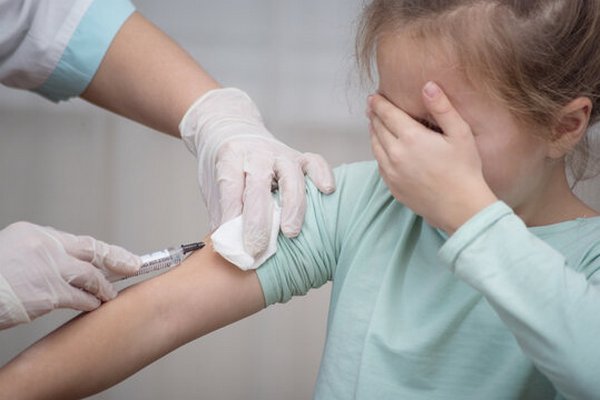Definition of Tetanus in Child:
Tetanus is an acute infectious bacterial disease caused by Clostridium tetani and characterized by muscular stiffness and painful paroxysmal spasms of the voluntary muscles caused by the powerful neurotoxin of the causative organism.

Tetanus is a wound infection caused by C. tetani. Occurring usually in the deep, contused, soil contaminated injuries with pyogenic organism it containing foreign bodies. Tetanus is wound, caused by exotoxin of clostridium tetani. Characterized by painful paroxysmal spasm of voluntary muscle and muscular rigidity.
Management of Neonatal Tatany or Child with Tetanus:
The specific management should aims at neutralization of the toxin and removal of the Cl. tetani.
- Human tetanus immunoglobulin 500 to 3000 IU should be given intramuscular immediate on admission to hospital. It is safest and most effective treatment without any complications.
- Antitetanic Serumn (ATS) can be administered after skin test with 30,000 to 1,00,000 IU, IM or IV.
- Antibiotic is administered and penicillin is the choice. Cephalosporin also can be used. Antipyretics are given to treat fever. Sedative and muscle relaxant is given with diazepam or phenobarbitone every 2 to 4 hours with calculated dose to control spasms.
- IV fluid therapy and oxygen therapy are essential.
- Mechanical ventilation may be needed in respiratory paralysis.
- Tracheostomy may be required in persistent laryngeal spasm.
Nursing Management of Tetanus in Child:
It includes the following:
- Supportive measures with special nursing care to be provided.
- The patient should be placed in isolation in a separate quite room with complete rest and close observation.
- Minimum disturbance and gentle handling to be maintained.
- Suctioning of oropharyngeal secretions, comfortable positioning oxygen therapy, IV fluid therapy, hygienic measures and constant monitoring with recording of vital signs are important essential measures.
- Initially oral feeding should be avoided and nasogastric tube feeding should be given.
- Administration of medications should be done following specific precautions (e.g. skin test for penicillin).
- Care of wound or injury or umbilical stump or ear discharge need special attention.
- Special care to be taken for tracheostomy and for mechanical ventilation.
- Pyridoxine therapy may give gratifying results in neonatal tetanus with conventional regimen.
Complications of Tetanus in Child:
Respiratory complications:
- Aspiration,
- Pneumonia,
- Pneumothorax,
- Mediastinal emphysema.
Cardiovascular complications:
- Hypertension or hypotension,
- Arrhythmia,
- Myocarditis.
Miscellaneous:
- Injury of tongue or oral mucosa,
- Intramuscular hematoma and vertebral fracture during tetanic convulsions,
- Fluid and electrolyte imbalance,
- Malnutrition.
More questions related to this topic:
- What is tetanus in children?
- What do you mean by tetanus?
- Write down the treatment of neonatal tetanus.
- Write down the management of tetanus.
- How will you manage a child with tetanus?
- Write down the nursing management of tetanus.
- What are the complications of tetanus in children?

Maria Khatun Mona is a Founder and Editor of Nursing Exercise Blog. She is a Nursing and Midwifery Expert. Currently she is working as a Registered Nurse at Evercare Hospital, Dhaka, Bangladesh. She has great passion in writing different articles on Nursing and Midwifery. Mail her at “maria.mona023@gmail.com”
